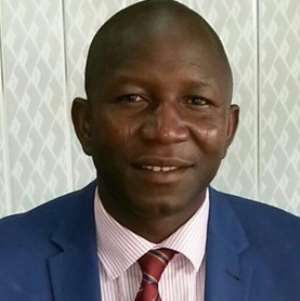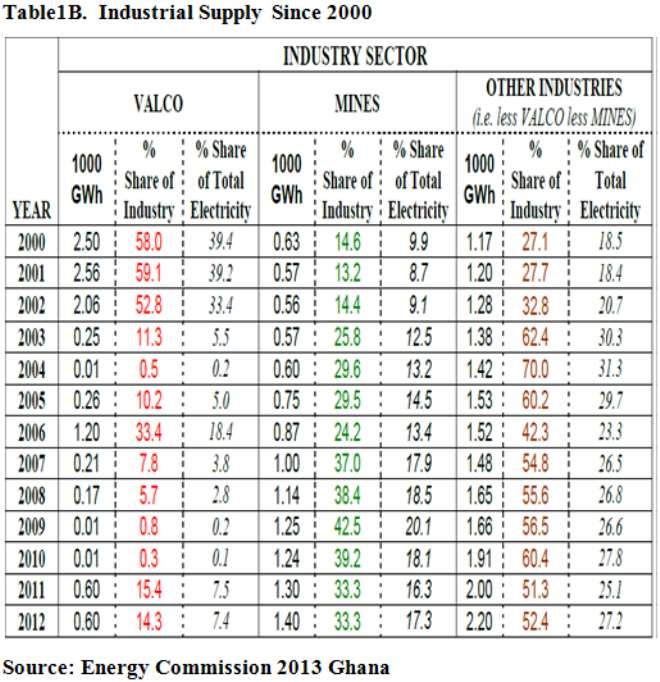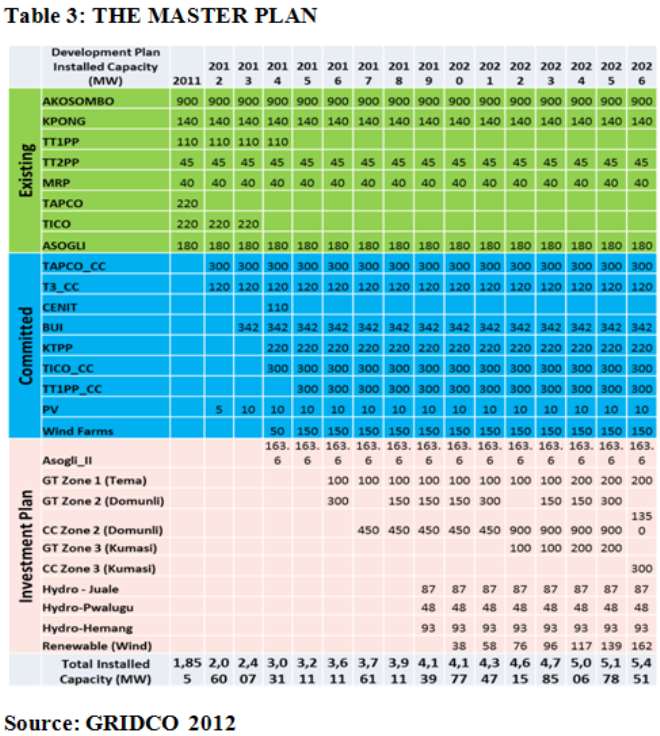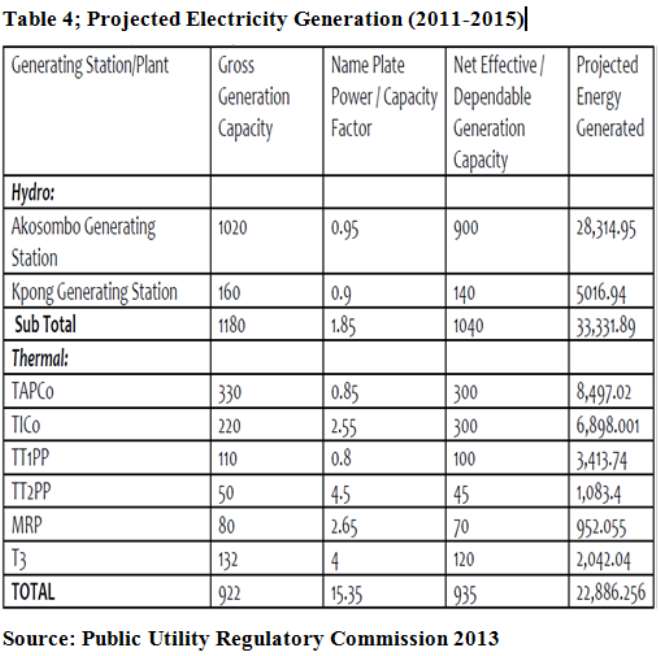
Price Of Electricity
The relative shifts in energy prices over the years from 1970s in particular, the world has witnessed greater efficiencies in electricity use and the substitution of electricity for all major sources (oil and gas), the increase in prices of these fuels are much faster than electricity. What does electricity prices mean for economic growth? Consider that electricity prices increase or decrease relative to other fuel prices, what will be the effects on electricity use?
The prices of electricity that the consumer pays for are a composite of costs of the fuels to generate the electricity and at a larger extent capital and labour costs from generation to distribution of electricity. The requirements for serving electricity definitely affect its prices. Though fuel use is determined primarily by cumulative use, instantaneous demand determines whether utilities must build additional facilities to supply power to their customers need. Cumulative cost of using electricity is an operating cost which is determined by fuel prices.
Whiles the cost of growth in instant demand requires introduction of new generating equipment,New capacity addition may increase price.this ultimately will affect economic output. The fluctuation of electricity prices also occurs because of rate design thus Time-of-use rates, users whose demand fall during peak times, when demand is great, pay larger utility bills. Their ability to shift demand off peak may reduce both their electricity costs and the need for the utility to build new facilities. A toll on electricity prices caused by changing fuel prices will impact differently from same change caused by cost of installing new capacities. 'The different effects will be related to the price elasticity of electricity demand with respect to electricity and alternative fuels, and to the influence of the price changes on productivity growth rate (National Academy Press Washington. D.C. 1986).
An analysis of electricity price data in Ghana is interesting for several purposes. The functioning of the electricity market makes it of relevance to build statistical models useful for analysis and forecasting of electricity prices. Moreover, adequate models for price behaviour are also of interest due to the nature of deregulated electricity market. Knowledge about electricity prices will help in future price and risk management. The development of models for pricing of power derivatives is therefore of importance. In microeconomics the development of peak-load pricing models has received considerable interest and frequently these models are studied in the context of optimal governmental regulation of public utilities such as electricity companies. The peak-load pricing problem is typically characterized by the supply of a public utility good being non-storable and which exhibits periodic and stochastic demand fluctuations.
Under stated reforms GoG is making frantic efforts to ensure that universal accessibility of electricity is achieved. However making electricity available is not making the commodity affordable. In the short run reforms usually presents tariff hikes unless otherwise inculcated in the reform package, many Ghanaian consumers will face electricity ''affordability crises''. This will inevitably reduce accessibility since many distributers will disconnect consumers from electricity supplies.
The public utility regulatory commission (PURC) since coming into existence reviewed electricity tariffs on several occasions, the latest review was 2013 and these reviews have resulted in increase of electricity tariff by about 3000% from the year 2000. The tariff increase also saw a reduction in the 'lifeline consumption' from 100kWh per month to 50 kWh while 'lifeline tariff' was increased from 1200 cedi to 4000 cedi.
Consumer Complains Versus The Interest Of Utility Providers
The 1997 drought saw Ghana through another power crises. In the midst of the crisis the public and the industry went panicking about shortages in electricity and are prepared to pay more for it. Thus according to government report (Quentin Peel, 1998) massive protestation by Trade Union Congress (TUC), Association of Ghana Industries (AGI) and Ashanti Goldfields Company Limited (AGC) were carried out. With companies like AGC threaten to close down some of its operations because the increase in rates had resulted to a higher cost of producing an ounce of gold by US $20, making it less competitive on the global stage.
Generally the protesters claim that their members could not afford the tariff increases because it was not complemented by a comparable increase in wages and salaries. Contrary to consumer's outcry, utilities service providers clamoured for further upward adjustments of tariffs insisting that the prevailing tariffs were still uneconomical. Notwithstanding this, PURC introduce some amount of gradualism in the attainment of economic electricity rates to minimize the impact of tariff increment on all classes (PURC, 2000).
This is because in the view of PURC the utilities have made no effort since the last tariff adjustments to increase efficiency, reduce system losses and improve quality of services to customers; hence there is no justification for another increment.
In 2008 the government of Ghana promised to increase power generation capacity expansion, rehabilitate, and reinforce transmissions and distribution of infrastructure to meet the projected growth in power demand of about 10% p.a this will ensure increased access to reliable electricity from house hold to industry as well as increase export of power to neighbouring countries in the medium-term (Ministry of energy 2012). The gradual fall in the accessibility and use of electricity in all sectors especially the house hold necessitated this, For instance in 2010 household use of electricity fell from
Through GRIDCo GoG has generated a fifteen year master plan (2011-2026) period. This guide will lead the ministry of energy into investing in the generation and transmission for both public and private sectors 'based on a detailed load forecast study, optimal technology options, determination of capacity reserve margin and a least-cost approach to meet electricity demand while ensuring the system security and reliability' (ministry of energy 2012). The master plan is detailed in table 3 below.
Generation, Transmission And Distribution
Between 2009 and 2010 Total installed generation capacity in the country has increased from 1,810 MW to 2,185.5MW, additional 375.5MW of thermal generation capacity from: Tema Thermal 1 Power Plant 126MW; Tema Thermal 2 Power Plant 49.5MW; and Sunon Asogli Power Plant 200 MW has also been added. Whiles additional 3700MW is expected to come on stream from: Takoradi (T3) Thermal Project 132MW, CENIT Power Plant 126MW, Solar Plant at Navrongo 2MW and the TAPCo steam turbine 110MW. Another 710MW will come from: Bui Hydro Power Project 400MW, TICo Expansion Project 110MW, and Alstom Units at Kpone 200MW.The table below shows the various generation capacities from various plants.
Whiles approximately 340MW and 1190MW will be made available by Independent Power Producers (IPP). This effort is towards meeting the 5,000MW medium-term goal (ministry of energy 2012).
The ministry of energy is believe to be arresting the country's transmission challenges by progressively replacing over-aged and obsolete equipment and reinforcement, for instance the commissioning of the 60 km 161kV transmission line between Kumasi - Obuasi to reinforce and increase the power transmission capacity to Kumasi and northern Ghana, 'The construction of a 330kV Aboadze - Volta transmission line has also been completed'.
The upgrade of existing capacity transmission lines between Volta and New Tema substations from 340MVA (2 x 170MVA) to 728MVA (2 x 364MVA) is in operation.
The fourth 161kV transmission line between Tema and Accra is also in use. The upgrading of transformer capacities at Achimota, Akwatia, Asiekpe, Ho, Kumasi, Techiman, Tema, Takoradi and Winneba to increase power transfer and reliability to ECG and NEDCo has been completed.
The installation of capacitor banks at Achimota, Bogoso , Kpando, Kumasi , Takoradi, Sunyani, and Smelter substations to improve upon voltages, reduce transmission losses and also demand reduction for reactive power from power plants has been completed and in operation.
The construction of a 161/34.5kV 25MVA substation northern region (Buipe) to supply power to the Savanna-Diamond Cement factory and the Buipe Township and its environs is also in operation. The expansion of the existing Mallam substation by the incorporation of two (2) additional transformers, two (2) 161kV transmission lines and two (2) 34.5kV, 21.6MVA Capacitor Banks to meet the increasing loads in Accra and some parts of the central region. 1No. 66MVA transformer is in use. This and some others are what government is doing while distribution and transmission losses remain a challenge, evidence from figure 1.
Also, the Kumasi Second Bulk Supply Point (K2BSP) project is underway, the Accra Third Bulk Supply Point (A3BSP) is near completion, and The Smelter II Substation in Tema is currently on-going. The construction of the Kintampo substation is on-going. Whiles these and many more interventions are coming on stream to generate more power, Ghana still faces electricity crises. Thistherefore shows that power generated is not the same power that is supply in to the economy. This is indicated from figure 1 below
The figure shows that the transmission system has insufficient firm transfer capability to meet peak demand needs at many of the major load centres such as Accra and Kumasi. Therefore
GRIDCo will have to use interruptible and non-firm transfer capability to meet incremental power needs at these load centres. Voltages at most major substations are precariously low because there is inadequate installed reactive power and voltage support devices to boost voltages.
Operation of the grid at such low voltage levels with some transmission facilities at sustained loading levels above their operating security limits exposes the entire power system to significant risk, which can be costly in the long run. To understand the importance of a reliable power system it is essential to determine the impact of power supply reliability failures on society (Ghana wholesale power reliability assessment 2010).
How Government Hopes To Ensure Electricity Supply
It is within GOG's plans to achieve not less than '500MW or 10% contribution of modern renewable energies (excluding large hydro) in the electricity generation mix by 2020'. As a result The Renewable Energy Act 2011 (Act 832) is aimed at incentivising and encouraging private sector investment. Among the key provisions in the act are Feed-in-Tariff Scheme, this will offer a guarantee price for electricity generated from renewable energy sources.
Renewable Energy Purchase Obligations, under this, power distribution utilities and bulk electricity consumers will be under obliged to purchase a considerable percentage of their energy requirement from electricity generated from renewable energy sources. Transparency will also be ensured by providing a Licensing regime for Commercial Renewable Energy Service Providers in the renewable energy industry. A Renewable Energy Fund will be established for promotion, development and utilization of renewable energy resources (ministry of energy).
Ensuring energy efficiency, conservation and security of energy supply is inimical to economic growth. Consequently, GoG developed Energy Efficiency Standards and Labels for Refrigerating Appliances, Room Air Conditioners and Energy Saving Lamps. This move will transform the Refrigerating Appliance Market by reducing energy consumption of refrigerating appliances from the current average of 1,200kWh to 600kWh per appliance per annum.
Under this project, consumers who turn in their old refrigerating appliances will be supported financially to pay part of the cost of a new efficient refrigerator. Consumers who decide on higher efficiency refrigerating appliances will also receive additional rebates depending on the level of efficiency of the appliance. Donor communities such as the UNDP, Global Environment Facility and the Multilateral Fund of Canada have raised funds for the project implementation. The act of parliament LI 1958 (The Energy Efficiency (Refrigerating Appliances) Regulations, 2009) has given a legal backing to this move.
GoG further installed the Automatic Capacitor Banks (ACB) at selected government institutions (Ministry of Defence, Korle-Bu Teaching Hospital, the Office of the President, Food and Drugs Board, Accra Sports Stadium and Parliament House) for pilot testing; this is expected to reduce Government expenditure on electricity. The initiative 'has resulted in the reduction of power consumed from 11,743kVA to 9,889kVA this translated in monetary terms to a total savings of about GH¢39,145 a month or GH¢469,740 per annum' (Ministry of energy 2012).
The High voltage distribution system at Madina, Adenta and Suame Magazine and ECG's system loss and network improvement project being undertaken by FXXC of China are some mitigation options that will ensure metering and network reconfigurations are reduced by a total system loss of 10%. Meter enclosures are under installation to help protect ECG meters and avoid meter tampering and by-passing. Government is championing a rewiring of the major markets in Accra, Tema and Kumasi to check energy theft, and provide safe electricity supply.
On a short term bases VRA has switch on their dual fuel power plants to operate on light crude oil (LCO). From a long standing relationship, Cote D'Ivoire has pledge to provide Ghana with between 30MW to 50MW of power.
Challenges Facing Electricity Supply In Ghana
According to the utility service providers one of the major handicaps that thwart their efforts in delivering reliable supply is their inability to mobilise revenue. To address this, Prepayment metering schemes has been embark on in some parts of the country and it is expected to be expanded to all urban communities. Similarly an Automatic Meter Reading and billing equipment (AMR) have been deployed for industrial customers for easy remote meter reading and associated activities.
In August 28, 2012 the West African Gas Pipeline Company (WAGPC) announced that a vessel has pierced the West African gas pipeline at Lome, Togo causing supply challenges.
The result of this is a power supply deficit totalling 300MW at peak time (i.e. 6pm to 11pm) and about 100MW during the day (i.e. off peak). This development exposes now and future supplies to danger. The Sunon Asogli Power Company has also been facing operational problems adding more pressure to supply (Ministry of Energy 2012).
This deficiency in power generation and supply has compelled ECG to embark on power rationing program to prevent complete system collapse. Meaning electricity supply to consumers will be curtailed daily until an amicable solution is found. Industrial customers are excluded as power will be available for them (Ministry of Energy 2012).
Economic Cost Of Failure Of Electricity Supply
Any increase in electricity prices will decrease the rate of growth of productivity, nevertheless without the additional depressing effect on productivity growth rate traceable to increased alternative fuel prices. Thus, the growth rate of productivity will reduce if the electricity price changes as a result of changing fuel prices than if the electricity price change is independent of fuel prices. It is harder to determine the effects on electricity use of changes in electricity prices from allocating costs according to the period of usage.
In some instances, the resulting cost of allocation will depress growth in electricity end uses that occur predominately during peak periods, but at the same time it may motivate consumption during off-peak periods (National Academy Press Washington. D.C. 1986). The Ghanaian society pays the full cost of reliable power; either they pay a low tariff and endure the harmful effect of reliability failures on the economy or pay fair power prices and to be assure of high availability and reliability of supply.
Power failures cause significant direct and indirect costs to utilities, consumers, and the general economy. The World Bank estimates that the direct cost of power outages to African nations is typically about 2% of GDP. 'For reference Ghana's GDP growth has averaged about 5% over the last 10 years, meaning that power unreliability negates a significant amount of potential economic growth. The World Bank again estimates that Ghana's nominal GDP as of 2008 was approximately $16.1 billion, meaning that power outages potentially cost the economy more than US$320 million per year'. This amount (US$320 million) is more than enough to fund GRIDCo'sactivities from 2010 to 2016 and to ensure its efficient performance to consumers. Direct costs to utilities among other things include cost of repairing damaged equipment, process restart costs; generation revenue loses and reduces equipment's life span.
Also, electricity supply interruptions can directly costs the consumers the damage of household electrical appliances, permanent loss of production, and the spoilage of products and goods. The Ghana power reliability report (2010) cited the World Bank as estimating that African manufacturing enterprises record an average of 56 days of power outages per year, resulting in an average loss of 5-6% of annual sales revenue in formal businesses and up to 20% of sales in the informal sector.
The opportunity cost related to loss of sales and revenue, the cost of doing business resulting from uncertainty, as well as the cost of on-site power equipment such as generators and un-interruptible power supplies are the cost that have ripple on the household economy. They unnecessarily reduce income and the profitability of doing business at the household level in Ghana, which hamper or discourage businesses as a whole (Ghana wholesale power reliability assessment 2010).
Mahama Hudu
(Center For energy Research-Ghana)
Contact: 0506734457
Email; [email protected]
 2014-07-16 115049
2014-07-16 115049
 2014-07-16 115204
2014-07-16 115204
 2014-07-16 115204
2014-07-16 115204
 2014-07-16 115258
2014-07-16 115258
 2014-07-16 115554
2014-07-16 115554
 2014-07-16 115647
2014-07-16 115647
 2014-07-16 115754
2014-07-16 115754




 We’ll no longer tolerate your empty, unwarranted attacks – TUC blasts Prof Adei
We’ll no longer tolerate your empty, unwarranted attacks – TUC blasts Prof Adei
 Bawumia donates GHc200,000 to support Madina fire victims
Bawumia donates GHc200,000 to support Madina fire victims
 IMF to disburse US$360million third tranche to Ghana without creditors MoU
IMF to disburse US$360million third tranche to Ghana without creditors MoU
 Truck owner share insights into train collision incident
Truck owner share insights into train collision incident
 Paramount chief of Bassare Traditional Area passes on
Paramount chief of Bassare Traditional Area passes on
 Two teachers in court over alleged illegal possession of BECE papers
Two teachers in court over alleged illegal possession of BECE papers
 Sunyani: Victim allegedly shot by traditional warriors appeals for justice
Sunyani: Victim allegedly shot by traditional warriors appeals for justice
 Mahama vows to scrap teacher licensure exams, review Free SHS policy
Mahama vows to scrap teacher licensure exams, review Free SHS policy
 Government will replace burnt Madina shops with a new three-story, 120-store fac...
Government will replace burnt Madina shops with a new three-story, 120-store fac...
